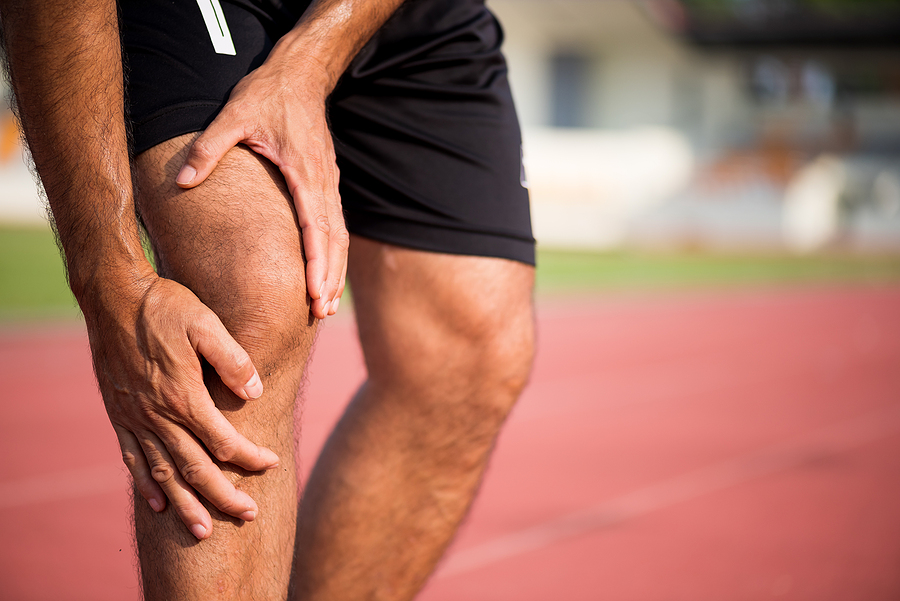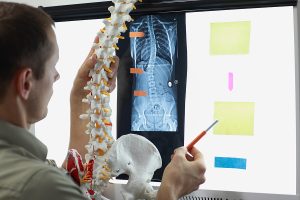The NSC reports that 3,631,970 injuries occurred from the use of sports and recreational equipment. Those injuries were severe enough to require trips to local emergency rooms. That’s injuries from equipment. What about injuries when playing sports professionally or for fun?
The NIH reports that 3.5 million youth aged 14 or younger received medical care for sports injuries received during practice or while playing. Basketball, football, and soccer are the sports that lead to higher percentages of injuries in all ages. Basketball is the most common sport with injuries for those between the ages of 15 and 24, while cycling is the most common sport for injuries in those between the ages of 25 and older.
When there are injuries, what are the most common sports injuries? Are there things you can do to prevent injuries?
A Quick Breakdown of the 13 Most Common Injuries
Fresno may not have the surfing and other watersports that coastal cities and towns experience, but the city does have several popular action sports including baseball, basketball, football, and soccer. All of those are leading sports for injuries. There are 13 common sports injuries on our list of the issues our Fresno doctors see most often.
Achilles Tendon Injuries
The Achilles tendon is a band of tissues that connect the calf muscles to your heel. It’s a flexible tendon that gets a lot of use when you jump, run, and walk. As it gets used a lot, it’s at risk of inflammation and swelling. An inflamed tendon is known as tendonitis. That’s one common Achilles tendon injury.
The tendon’s fibers can also tear or rip. If this happens, you may hear a pop and feel a lot of pain in the area between your calf and heel. Immediate medical attention is needed for a ruptured or torn tendon.
Broken Bones/Fractures
A fracture is another term for a broken bone. Breaks may be partial or complete. There are different types of breaks. The treatment plan depends on the severity of the fracture. If you require surgical repair to realign and pin the bone sections together, the recovery takes longer.
Pain is another factor. A broken and healing bone causes a lot of pain, but management of that pain is essential. You don’t want to rely on pain medications for longer than necessary. Learning other pain management techniques is important.
Concussions/Head Injuries
Any blow to the head increases the risk of a concussion. At a minimum, a hit to the face might cause a nosebleed, but it can also cause a broken nose. A hit to the head causes the brain to suddenly shift of the brain within the skull. This increases the risk of a brain bleed, but it is more likely to cause a concussion.
A headache, dizziness, blurred vision, and loss of consciousness are all signs of a concussion and it’s a major concern. Medical care is essential to ensure that the damage to the brain isn’t worse than it first appears.
Cuts/Scrapes
Any sport increases the risk of cuts and scrapes. If you hit the ground, your skin does get scraped up. These are generally things you can take care of on your own. However, a cut that requires stitches needs a trip to a doctor.
Dislocations
If a bone pops out of its joint, it’s a dislocation. Dislocations need to be repaired by putting the bone back in the socket and assessing for any damage to ligaments and tendons. We often recommend physical therapy to keep that joint from stiffening up as the tissue heals.
Joint Injuries
Joint injuries are another common concern. Joints take a lot of abuse while playing sports, and torn tendons and ligaments cause pain and swelling in your joints. Some of the most common joint injuries are in the knees, but there are also ankle, wrist, elbow, and shoulder injuries that occur within the joints.
Patellofemoral Syndrome
Damaged cartilage under the kneecap is often referred to as runner’s knee, but it’s a common knee injury called patellofemoral syndrome. It typically occurs with excess squatting or climbing movements. Stretching the leg and knee muscles before sports is essential. Otherwise, treating patellofemoral syndrome involves pain management techniques and a knee brace.
Rotator Cuff Injuries
The rotator cuff is the series of muscles and tendons that support the shoulder joint. Injury to the tissue of the rotator cuff results in dull pain. Rotator cuff injuries are more common with age and in sports like baseball, tennis, and weight lifting. If the rotator cuff tears, surgical repair is important. Pain management techniques and physical therapy help with rotator cuff injuries that don’t require surgery.
Sciatica
The sciatic nerve runs down the leg to the ankle. When it’s injured or experiencing pressure, it causes numbness, pain, and weakness down the leg. The leg may tingle like it’s asleep, only it doesn’t wake up easily if you change your position.
Sciatica is often caused by another issue, such as a herniated or slipped disc or pelvic injury. Addressing the underlying cause is important to finding the right treatment for sciatica.
Shin Splints
When you’re playing sports and running around, the shin takes a lot of abuse. Shin splints occur when the shin and its connective tissue become inflamed. If the shoes you wear do not support you properly, shin splints occur. Failing to stretch properly before a game is another problem. Working with a sports and orthopedic doctor helps alleviate the pain and strengthen the tissue on your shins.
Sprains/Strains
Soft tissue (ligaments, muscles, and tendons) is prone to injury and can appear suddenly or be a long-term issue. They occur when you overextend and stretch or tear that tissue, which puts extra stress on the joint or bone they support. The most common sprains and strains occur in the ACL, ankle, groin, hamstring, hip flexor, and wrist.
Sprains occur with bruising while a strain doesn’t. In both cases, it’s important to consult with a doctor. You might simply need to rest and use ice to ease inflammation, but doctors can help you strengthen the muscles and avoid having sprains or strains reoccur.
Tendinitis
We’ve already mentioned tendonitis in the Achilles tendon, but the elbows, knees, shoulders, and wrists also experience tendonitis. Rest is essential, as the tendon needs time to heel. Non-invasive techniques to help heal the tissue within the tendon are recommended.
Tennis or Golf Elbow
Pain running from the elbow to the forearm is often tied to tennis or golf elbow. It’s a condition where the tendons connecting the forearm muscles to the inside of the elbow become inflamed. We recommend hand-strengthening exercises and physical therapy treatment options.
Seek a Sports and Orthopedic Doctor and Play in the Best Shape Possible
A player being out of shape or overweight causes a lot of injuries. The doctors at Premium Sports & Orthopedics are here to help players get in the best shape possible by losing weight, addressing any current injuries, and building muscle and strengthening joints to prevent future injuries.
It’s also important that you get medical care when you’re injured. Even a minor injury can worsen and become severe. Address injuries and pain sooner rather than later. If you address problems when they’re minor, recovery times are shorter. You’ll be back out on the field or court quickly, but you’ll also have experts working with you to ensure you’re stronger and less likely to experience future injuries. Fresno’s Premium Sports & Orthopedics specializes in the following:
- Back Pain Treatment
- EMS Training
- IV Drip Therapy
- Medical Weight Loss & Fitness Programs
- Orthopedic & Sports Injury Treatment
- PRP Injections
- Shoulder, Knee, and Ankle Pain Treatment
- Stem Cell Therapy
Schedule an appointment with the sports and orthopedic doctors at Fresno’s Premium Sports & Orthopedics. We’ll address your concerns, work out the best plan for addressing pain, helping your muscles, bones, and ligaments heal, and do everything to get you back out on the field as quickly as possible without putting you at risk of re-injury. Schedule an appointment online or by phone today.







